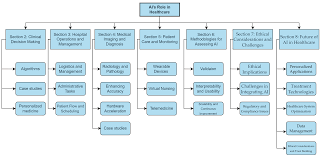Keeping up with cyber threats keeps many business owners up at night. Maybe your firewall feels more like a screen door. Perhaps new rules and rising attack costs make your IT team sweat.
Your bank account might not like it, but ignoring cyber risks can cost even more.
Experts say companies will spend more than ever on digital security in 2025. Still, not everyone knows the most effective way to pay for better protection. This post explains practical steps to fund upgrades, manage risk, and maximize every dollar.
Want to keep your business safe without overspending? Continue reading.
Identifying the Need for Cybersecurity Upgrades in 2025
Cyber threats continue to rise sharply, putting businesses at risk. Compliance demands are also increasing, leaving companies scrambling to keep up with regulations.
Rising cybersecurity threats and risks
Hackers keep getting more sophisticated. Global cybercrime damage costs may reach $10.5 trillion each year by 2025, according to Cybersecurity Ventures. Business email scams and ransomware attacks target small and large companies alike.
Criminals seek data, money, and access to your system. The FBI’s Internet Crime Complaint Center reported a record 800,944 cybercrime complaints in 2022. That number continues to increase.
Attacks become faster and more complex as criminals use artificial intelligence and new tactics.
Owners require strong cyber defense strategies for financial resilience. Cybersecurity funding cannot be postponed. Smart financial planning must include increasing risk management costs and compliance measures.
Threat analysis should be updated regularly as the rules change each year.
“There are only two types of companies: those that have been hacked and those that will be.” – Robert Mueller, former FBI Director
Consider how meeting compliance and regulatory requirements fits into your plans.
Increased compliance and regulatory requirements
New laws and stricter regulatory frameworks keep businesses alert. The White House’s National Cybersecurity Strategy, introduced in March 2023, requires companies to improve data protection and accountability.
Fines for breaking privacy rules are significant; the SEC charged SolarWinds after their 2020 cyberattack. Regulations like GDPR or CCPA often come with substantial penalties that can affect your bottom line if you fall out of compliance.
Budgeting for cybersecurity upgrades now serves as both a shield and a business necessity. Insurance companies might raise premiums or deny coverage to firms lacking proper risk management plans.
Banks want proof of compliance measures before releasing loans or investments. Staying current helps you avoid complications, lawsuits, and costly fines down the road while also showing customers they can rely on your cyber defense strategies.
Key Strategies for Financing Cybersecurity Upgrades
When it comes to financing cybersecurity upgrades, prioritizing budget allocation is crucial. You must identify areas that need funding the most and allocate resources smartly to maximize benefits.
Allocating budget effectively
Spread your IT budget by focusing on your most urgent cyber threats. Prioritize core data protection and risk management over flashy extras. Many small businesses lose up to 12% of revenue yearly to cybercrime, so every dollar counts.
Line up your spending with must-have compliance measures like GDPR or CCPA if you work in regulated industries.
Cut through confusion by asking, “What keeps me up at night?” A good budget matches your biggest risks. Set aside funds for employee training; experts say 95% of breaches are caused by human error.
Smart business owners treat cybersecurity funding as insurance, not a luxury.
The most expensive mistake is waiting until after an attack to invest.
Leveraging government incentives and grants
Government incentives and grants can significantly ease the financial burden of cybersecurity upgrades. Taking advantage of these opportunities allows business owners to invest wisely in digital security.
- Various federal and state programs offer financial assistance. These funds support businesses looking to enhance their cybersecurity infrastructure.
- Many grants focus on specific sectors, such as healthcare or manufacturing. Adapting your application to meet these sector-specific criteria increases your chances of approval.
- Some local governments provide tax credits for investing in cybersecurity technology. These credits can offset compliance costs and help strengthen your financial resilience.
- Look out for grant competitions that encourage innovation in cyber defense strategies. Winning these competitions not only provides funding but also adds credibility to your business.
- Explore partnerships with universities or research institutions that offer grant funding for collaborative projects. Sharing resources with academic experts can lead to novel solutions and more solid risk management practices.
- Ensure you stay updated on new legislation aimed at promoting cybersecurity funding options for small businesses. Treat this like a treasure map; knowing where to look can lead you straight to valuable resources.
- Keep track of deadlines for applications and submissions carefully. Missing a deadline could mean losing out on potential assistance crucial for enhancing your cybersecurity posture.
- Attend workshops or webinars hosted by government agencies about available grants and incentives often held annually or quarterly. Networking during these events can also open doors to new collaboration opportunities.
- Consider hiring a consultant familiar with securing government grants if the process seems daunting at first glance; an expert can simplify applications, increasing chances of success without much hassle.
- Monitor the results of funded projects closely; demonstrating solid outcomes may make it easier to access future funding opportunities as success builds trust from funders in subsequent requests for aid.
Exploring cybersecurity-specific financing options
Financing cybersecurity upgrades takes thought and planning. Certain options focus specifically on this critical area.
- Cybersecurity grants are available from various organizations. These funds help businesses enhance their defenses against cyber threats. The application process may vary, so research to find the right fits.
- Financial institutions now offer specialized loans for cybersecurity investments. These loans can provide the necessary capital to upgrade systems and implement new technologies. Look for terms that match your cash flow needs.
- Some tech companies provide leasing options for cybersecurity equipment and software. Leasing lets businesses access high-quality security solutions without large upfront costs. It also keeps budget flexibility intact.
- Explore insurance policies that cover cyber threats under specific terms. Cyber liability insurance protects against data breaches and other risks, reducing potential losses significantly. Make sure to read policy details closely.
- Collaborate with industry partners to share funding or resources for common cybersecurity projects. This approach can lower individual costs while enhancing security across the board. Strong alliances often yield better financial outcomes.
- Research crowdfunding opportunities focused on tech innovations in cybersecurity. Engaging with investors who value digital security can open doors to financing while building community support.
- Consider joining cooperative purchasing groups focused on technology investments, including cybersecurity tools and services. Pooling resources allows smaller businesses to negotiate better pricing with vendors while improving collective defense strategies.
- Keep an eye on state-level programs that promote technology advancements in business sectors, including cybersecurity measures and compliance efforts with regulations like GDPR or CCPA.
- Don’t overlook tax incentives for investing in cybersecurity improvements aimed at risk management and employee training initiatives; these can ease the financial strain as you upgrade defenses against cybercrime prevention strategies.
- Evaluate public-private partnerships designed to bolster regional cybersecurity infrastructure; participating could lead to shared funding opportunities that benefit both parties involved while enhancing digital security measures overall.
The Role of Emerging Technologies in Cost Management
Emerging technologies can play a crucial role in managing costs for your cybersecurity upgrades. Automation tools reduce manual efforts and minimize unnecessary expenses, while artificial intelligence improves threat detection and helps you respond more quickly to incidents.
Automation to reduce operational costs
Automation helps businesses save money. It simplifies tasks and reduces the need for manual labor. By automating repetitive processes, teams can focus on more strategic work. For example, automated systems can manage alerts and updates in cybersecurity, cutting down response times significantly.
This technology also lowers operational costs by minimizing human error. Fewer mistakes mean less spending on fixes later. Alongside cost savings, automation enhances efficiency. Businesses that embrace these tools often see faster decision-making and stronger security postures against rising cyber threats in 2025.
Artificial intelligence (AI) for threat detection
AI plays a crucial role in threat detection. It can analyze vast amounts of data quickly. By recognizing patterns, it spots potential threats faster than humans can. Business owners benefit from this technology as it reduces response times to cyber incidents.
Integrating AI systems decreases costs over time. They help prevent costly breaches before they happen. With continuous learning, these systems enhance their detection capabilities.
Investing in AI for cybersecurity strengthens defenses and improves overall risk management strategies.
Partnering with Managed Security Service Providers (MSSPs)
Partnering with Managed Security Service Providers (MSSPs) offers clear advantages. These experts can enhance your cybersecurity efforts and help share costs effectively.
Benefits of outsourcing cybersecurity management
Businesses face a tough challenge in managing cybersecurity. Outsourcing can bring many advantages.
- Access to expertise, outsourcing gives you a team of skilled professionals who specialize in cybersecurity. These experts keep up with the latest threats and trends in cybercrime prevention.
- Cost savings, hiring full-time specialists can drain your IT budget. An outsourced service provides support without the overhead costs of extra staff.
- Focus on core activities, handling security issues takes time away from running your business. Delegating these tasks lets you concentrate on what you do best.
- 24/7 monitoring, cyber threats do not sleep; neither should your defense system. Managed Security Service Providers (MSSPs) offer round-the-clock surveillance to catch issues before they escalate.
- Flexible services, many MSSPs allow you to choose services based on your needs. You can find solutions designed specifically to fit your organization’s requirements.
- Improved compliance, navigating regulatory frameworks can be complex. Experts help ensure that your cybersecurity measures meet industry regulations and compliance costs.
- Enhanced threat detection, some providers use advanced technologies like artificial intelligence for threat analysis. This means quicker responses to potential breaches.
- Risk management support, MSSPs offer insights into risk management strategies that strengthen your overall security stance.
- Employee training resources, they often provide training programs for your staff on best practices in data protection and cybersecurity awareness.
- Adaptable solutions allow you to adjust services as needed without major overhauls or investments in new technology as your business grows or changes.
Outsourcing cybersecurity management brings smart financial planning together with critical safety measures for modern businesses.
Cost-sharing opportunities with MSSPs
Outsourcing cybersecurity management can lead to significant savings. MSSPs often offer cost-sharing opportunities that help businesses manage financial burdens more effectively. By partnering with an MSSP, you reduce the need for in-house staff and tools.
Instead of hiring a full team, share resources like threat analysis and compliance measures with your service provider.
Many MSSPs provide adaptable pricing models based on your specific needs. You might find options such as pay-as-you-go or subscription-based plans. This flexibility allows you to align spending with actual usage, optimizing your IT budget while maintaining strong cybersecurity defenses.
Investing in these partnerships not only enhances digital security but also strengthens financial resilience against cyber threats and regulatory compliance costs.
How to Manage Your IT Budget: Cutting Costs Without Sacrificating Quality
Managing your IT budget requires careful planning. Start by evaluating your current expenses. Identify areas where you can reduce costs without losing quality. For instance, review subscriptions to software or services that are underused.
Negotiate better rates with vendors; many are willing to provide discounts for loyal customers or long-term contracts.
Invest in training programs for employees, as a well-trained team can spot threats early and reduce the chances of costly breaches. This approach supports staff while saving money on outside consultations.
Consider adopting cloud security solutions; they often prove more cost-effective compared to traditional systems over time. Taking these steps helps ensure that your cybersecurity financing remains efficient and effective as you address evolving challenges ahead in digital security upgrades through digital financing options.
Business Processes Upgrades Through Digital Financing Options
Digital financing options can help businesses improve their processes effectively. These financial tools make it easier to invest in necessary advancements while managing cash flow.
Business owners should explore loans, credit lines, or lease arrangements designed specifically for technology investments. Adopting these options allows companies to stay competitive and innovate without draining their budgets.
Applying digital financing also creates opportunities for better compliance with regulatory frameworks. Businesses that prioritize cybersecurity through these upgrades can mitigate risks associated with cyber threats.
This forward-thinking approach not only strengthens defenses but also enhances overall financial resilience in a constantly evolving environment of digital security challenges.
Measuring the Return on Investment (ROI) in Cybersecurity
Measuring ROI in cybersecurity means looking at the benefits against what you spend. You want to see how much money and risk you save by investing in strong defenses.
Quantifying risk reduction benefits
Quantifying risk reduction benefits starts with understanding potential losses from cyber threats. Businesses often face hefty financial burdens when dealing with data breaches or system failures.
By investing in cybersecurity, companies can significantly decrease these costs. Studies show that organizations implementing strong cyber defenses can reduce their loss exposure by upwards of 60 percent.
Take proactive steps to measure your security investments’ impact on risk. Track incidents before and after upgrades to see the difference clearly. Document how fewer threats translate into lower insurance premiums too; many insurers reward strong security measures with discounts.
This way, you not only protect your data but also enhance your bottom line through savings over time.
Long-term savings through proactive security measures
Investing in security measures pays off over time. Businesses that act early can prevent costly breaches later. Cybercrime continues to rise, and the impact of a breach can be devastating.
Companies face hefty fines due to increased compliance requirements; these costs add up quickly.
By focusing on defense strategies now, businesses can save significantly down the road. It becomes easier to manage IT budgets when risks are reduced. For instance, a small investment in employee training today may result in fewer incidents tomorrow.
Long-term savings emerge from avoiding losses associated with cyber threats and regulatory penalties.
Conclusion
Financing cybersecurity upgrades in 2025 requires wise choices. Business owners must prioritize budget allocation and explore available funding options. Collaborating with managed security service providers can ease the financial burden.
New technologies will also play an important role in cost savings. A forward-thinking approach today ensures better protection tomorrow, keeping businesses safe from cyber threats and compliant with regulations.

















